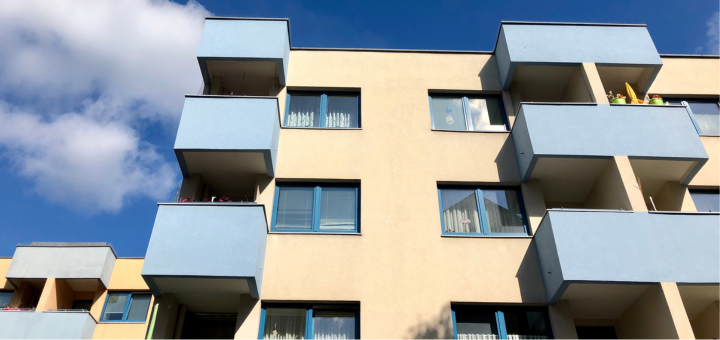Despite immense variation in size, composition and character, local governments share one common responsibility – to act in the best interests of the community they are entrusted to represent.
In pursuit of this goal, local governments deliver, plan and advocate for the issues facing their community today, those coming down the road tomorrow, and set the foundations for a more prosperous longer-term. Local government delivery, planning and advocacy occurs in a dynamic environment influenced by many external factors – including state and federal governments’ disposition, a changing and more divergent economic, cultural and social landscape, and other macro disruptions, like geo-political shifts, climate change and, as we continue to experience, the COVID-19 pandemic.
For Australians, one of the more disruptive elements of COVID-19 was the requirement that we limit our travel, that we stick closer to home. And, even though we see in the news that the vaccines are on their way, that the economy is in recovery and that we largely have the public health matters under control, a feature of our new normal – as it’s being touted – is a prediction that we will continue to spend a higher relative share of time at home and in our local areas, compared to before the pandemic.
Just as this adjustment will make residents more considerate of the features they need within their home, they will, by extension, become more conscious of and invested in ensuring that the attributes and services on offer within their local area are well aligned with their values and needs – what they believe makes somewhere a good place to live.
As influential local area custodians, councils should view residents’ placing a greater emphasis on their local area as an opportunity to develop a deeper understanding of their community’s values, experiences and needs, with the goal being to develop resident centric policy and advocacy that advances the liveability of their LGA.
So how do we understand and advance the liveability of Australians’ local areas?
While there is a currency that comes with a place being branded ‘liveable’, lists that rank global cities’ liveability, and countless strategic planning documents across all levels of government espousing the virtues of creating more liveable towns and regions, there is no commonly accepted definition as to what liveability actually is, or simple recipe to make somewhere a better place to live. While on the surface this may seem like a failing, we believe it illustrates a truth. A truth that liveability manifests in many ways, and that discovering it requires two things: a human-centric approach and a small area geography.
Despite our many similarities, we all hold unique beliefs about what makes somewhere a good place to live. While my neighbour and I may both place a high value on feeling safe and the provision of affordable decent housing, she may also put a lot of stock in a diverse range of shopping, leisure and dining experiences, whereas I may be more interested in being able to access the natural environment. Just as our values differ, so too do our experiences of place. The lens through which I judge how safe I feel in my local area is my view, mine alone, and possibly different to how safe my neighbour feels.
Even though the built and natural environments of our suburbs and towns share many common attributes, they too are all unique in personality and quality. Understanding and accounting for this diversity – even across small geographic areas like LGAs – is another crucial ingredient to not only understanding liveability – but in determining where to focus your efforts to advance residents’ quality of life.
Given this, it is our belief that any attempt to understand and advance the liveability of Australians’ local areas should be resident-centric in its approach – to account for human preferences – and localised in its lens – to understand the role of geography.
We have thought deeply about this and believe that ‘acting in the community’s best interest in 2021’ demands that council delivery, planning and advocacy be based in evidence and informed by a deep and authentic understanding of residents’ needs. Our new offer, Living in Place, can assist councils in this regard.
Living in Place puts your residents at the centre of your strategic planning and advocacy
Living in Place is an independent, robust and repeatable community survey that seeks to understand and advance the liveability of Australians’ local areas. It provides participating councils with a deep and representative understanding of their community’s values, experiences and needs, and creates a resident centric evidence base to inform, monitor and evaluate strategic planning and advocacy.
Living in Place is delivered in partnership with Ipsos Public Affairs and adopts the questionnaire design employed for the Ipsos Life in Australia survey – the nation’s largest annual investigation of community values and liveability. Because of this alliance, participating councils can compare their Living in Place results with those from other similar LGAs, the region, state and national averages – drawn from a dataset of more than 60,000 Australian perspectives.
Using our list of 16 critical liveability attributes, Living in Place understands what your residents believe makes somewhere a good place to live and how they experience their local area in that regard. It combines your residents’ values & experiences to derive an Overall Liveability Index and identifies which specific attributes your residents believe need to be maintained and improved to advance quality of life across your LGA.
Designed specifically for application in local government, Living in Place strikes the appropriate balance between academic rigour and practical application. It is efficiently delivered using an innovative and proven approach over a six-week period and is not cost prohibitive. With best-in-class analysis and reporting capability – including the provision of an interactive online tool, narrative based views report and insights workshop – Living in Place empowers participating councils to make resident centric decisions with economy and confidence.
Our vision for Living in Place
Our long-term aspiration for Living in Place is that it becomes the industry standard and most commonly adopted method through which local government seek to represent and monitor their community’s views within their decision making. We also hope that through this process of adoption councils begin to openly discuss, share, learn from and support each other as we collectively seek to advance the liveability of Australians’ local areas.
Over the past 20 years, .id has built a reputation across hundreds of local councils in Australia and New Zealand for its reliable objective data, analysis and insight. We bring this same disposition to the creation and execution of Living in Place. Living in Place supports .id’s vision to provide a whole decision-making ecology that assists with the creation of informed and well-rounded policy.
Just as the most successful private sector organisations of today are those that are customer focused, the most successful councils of the future will be those who commit to being resident centric in their decision making.
Visit our dedicated Living in Place website to learn more about the offer, where you can take a guided video tour of our best-in-class online reporting and exploratory platform, views.id. We’ve also and published a case-study about how Living in Place is helping the City of Ipswich to make more resident centric decisions. Feel free to book a meeting a time convenient to you’re keen to learn more.









